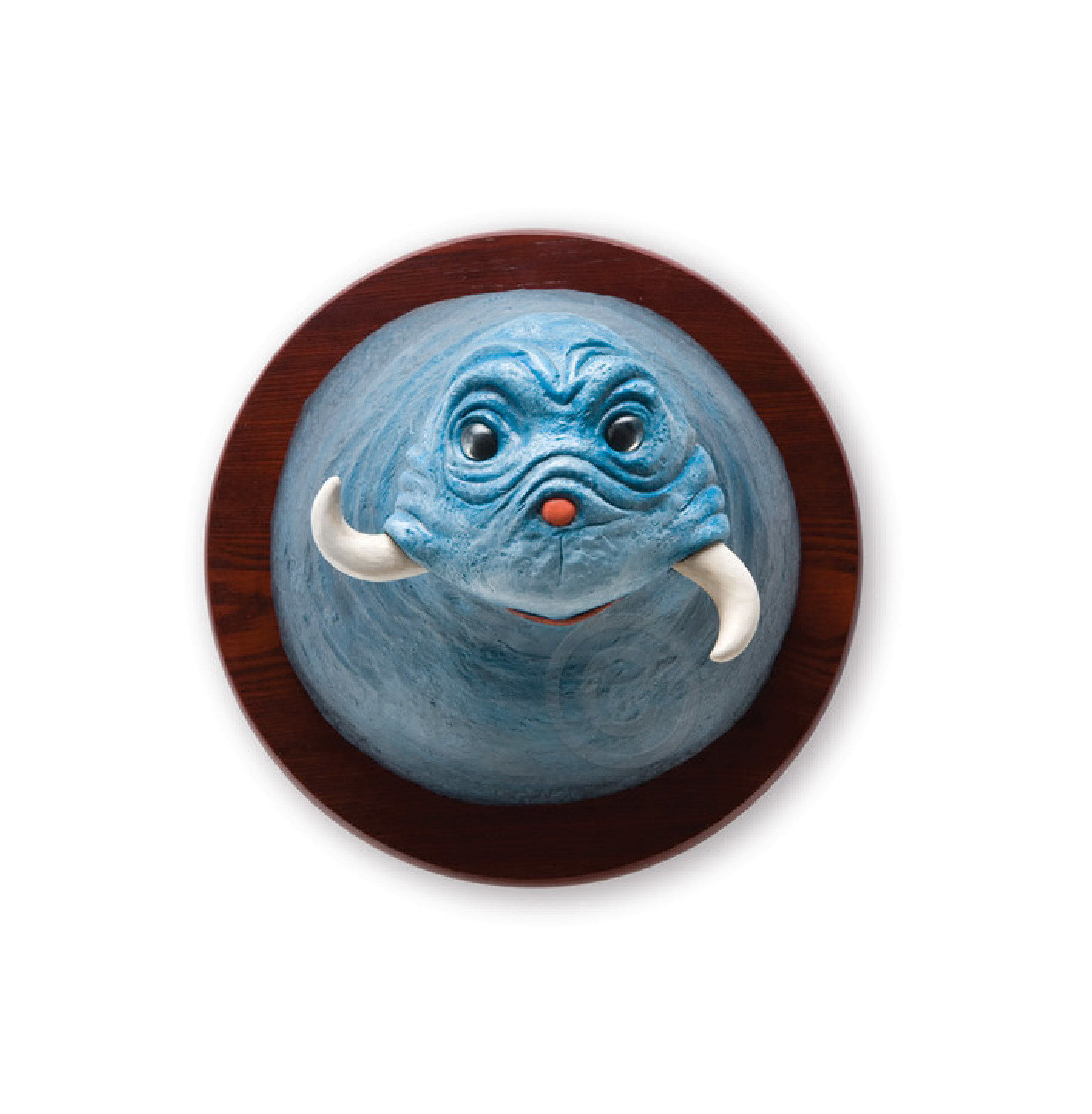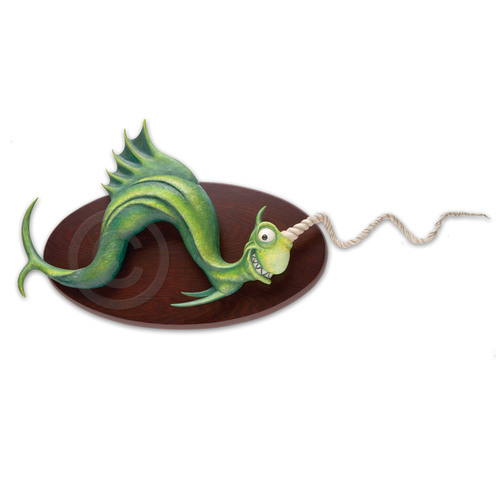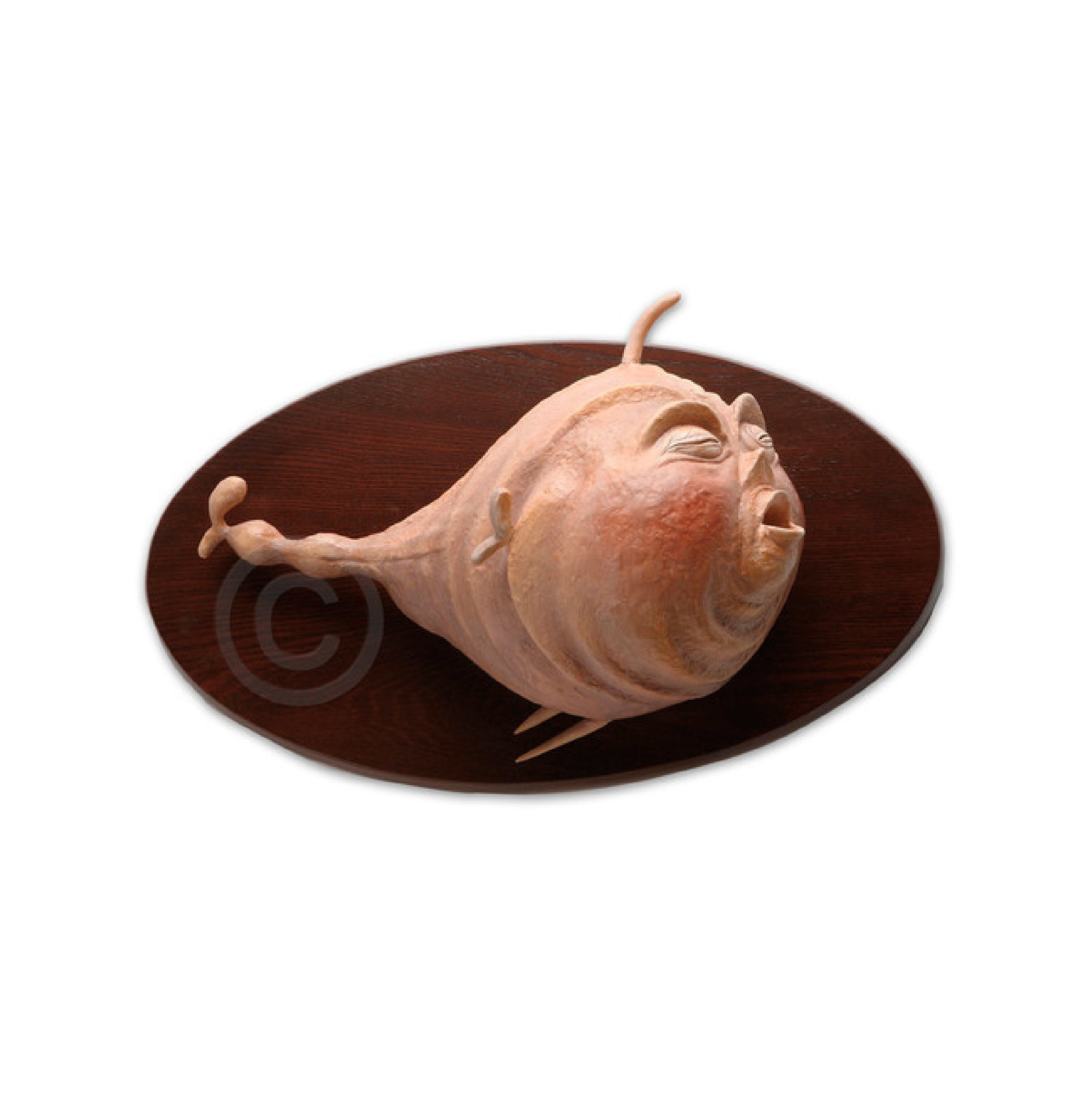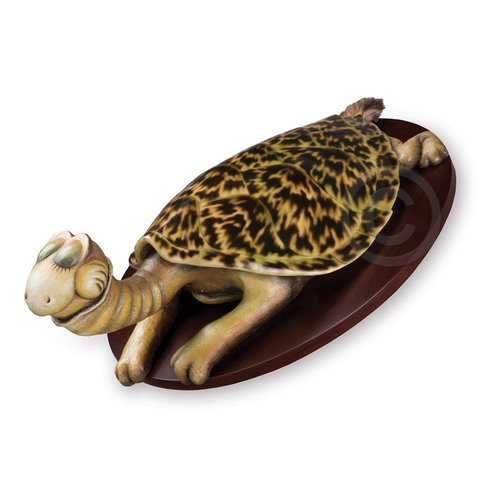The Seasick Walrus
Hand-painted Cast Resin Sculpture
Sculpture Dimensions: 6.37” h x 7.25” w x 4.5” d
Limited Edition of 850 Arabic Numbers, 99 Patrons’ Collection, 155 Collaborators’ Proofs, 5 Hors d’Commerce
IT’S ALL ABOUT FRIENDSHIP
“Friendships played a pivotal role in Dr. Seuss’s entire life. From his lifelong Dartmouth friends to those he met later in California, he never missed an opportunity to acknowledge their unending value and often gifted them unique works of art he had made himself.”
”
Very few original Dr. Seuss works ever made it out of Ted Geisel’s (aka Dr. Seuss) private collection. However, when they did they were typically gifted to close friends, family, or a charitable cause that Ted felt passionately about supporting.
One of Ted Geisel’s closest neighbors was also a cherished friend. Her patio was near enough to Ted and Audrey’s that the two couples often convened for “5 o’clock cocktails on the terrace.” On a special occasion for which Ted wanted to honor his friendship, he chose to gift her a sculpture he had made almost 30 years earlier, The Seasick Walrus.
The Rediscovered Taxidermy Sculptures
“Four additional works have surfaced from various private collections and archived imagery. Such exciting discoveries are rare since Ted Geisel seldom parted with his original works.”
Researching the artistic legacy of Ted Geisel can, at times, feel like the work of an archeologist searching for lost artifacts of an ancient civilization. Ted was incredibly prolific throughout his entire life and, while many works from his early career were documented, others have fallen into obscurity.
Until recently there were 17 known Taxidermy works created by Ted Geisel in the early 1930s. Each work has since been meticulously reproduced in small limited editions as part of the Art of Dr. Seuss Collection, with the majority of these works either sold out or exceptionally rare in their availability.
The Mugglesmirt
The Cruel Hack-Biter
The Flower Pot Walrus
Four additional works have surfaced from various private collections and archived imagery. Such exciting discoveries are rare since Ted Geisel seldom parted with his original works. The Seasick Walrus marks the first work to be included in the Rediscovered Taxidermy Collection from the Art of Dr. Seuss. The other three rediscovered works include (left to right above): The Mugglesmirt, The Cruel Hack-Biter, and The Flower Pot Walrus.
The Evolution of The Seasick Walrus
“The Seasick Walrus joins one of Dr. Seuss’s most sought-after sculptures, The Tufted Gustard, as one of the only known works to have been transformed over time from its original state.”
The Seasick Walrus joins one of Dr. Seuss’s most sought-after sculptures, The Tufted Gustard, as one of the only known works to have been transformed over time from its original state. Like The Gustard, The Seasick Walrus originally was a simple sculpted head, later mounted on a small round base.
In the case of The Gustard, Ted later added a metal ring around the work that he had found on the grounds of what would become his La Jolla home.
Tufted Gustard pre-metal ring
Final Tufted Gustard
The Walrus, circa 1935, underwent a similar transformation some years after it had been sculpted. Not only had it acquired a round base, it had also been affixed to a larger Navy-like shield emblazoned with a star at the bottom. This shield incorporated a similar look and feel to drawings Ted had completed for his popular Seuss Navy project in the late 1930s. It is believed that Ted reworked The Seasick Walrus (and possibly even renamed it at that time) to include it in one of his Seuss Navy exhibitions at the annual New York City National Motor Boat Show.
Original Walrus on Ted’s desk, photographed in 1935
Final Seasick Walrus with additional round base and shield.
Drawing from Seuss Navy Project


















